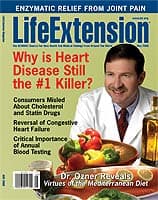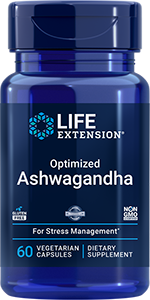 | May 2, 2008 | | | | A report published online on April 30, 2008 in the journal Breast Cancer Research concluded that the use of aspirin on a daily basis reduced the risk of estrogen receptor-positive breast cancer, which makes up 75 percent of breast cancer cases. These cancers have receptors on their surface for female hormone estrogen, which fuels the tumors’ growth. Gretchen L. Gierach and her colleagues at the National Cancer Institute evaluated data from 127,383 women aged 51 to 72 who were enrolled in the National Institutes of Health-AARP Diet and Health Study, which examined the relationship between diet, health-related behaviors and cancer. Questionnaires completed upon enrollment between1995 and 1996 provided information on diet history, demographic characteristics and other data. A second questionnaire completed between 1996 and 1997 collected information concerning medication use, including aspirin and nonaspirin nonsteroidal anti-inflammatory drugs (NSAIDs). Breast cancer cases were identified through cancer registry information through the end of 2003. Over the period examined, 4,501 women developed breast cancer. Of the invasive breast cancer cases for which estrogen receptor status was available, 1,439 were estrogen receptor positive and 280 estrogen receptor negative. Although NSAID use was not linked to a reduction in overall breast cancer risk, women who reported daily aspirin use had a 16 percent lower risk of estrogen receptor positive breast cancer than women who did not use the drug. There was also a significant reduction in risk in breast cancer in situ (localized cancer) among daily aspirin users. The study is one of the largest to date to evaluate the association between the type of NSAID used and breast cancer risk by tumor characteristics. The authors remark that the association of a reduction in estrogen receptor-positive breast cancer with aspirin is consistent with aspirin’s ability to permanently inactivate cyclooxygenase-2 (COX-2), which suppresses estrogen synthesis by decreasing aromatase activity, among other pathways of risk reduction. COX-2 is expressed both in situ and invasive breast cancer, and its upregulation may be an early event in carcinogenesis. “Our results provide support for further evaluating relationships in prospective studies with well-defined measures of NSAID use by NSAID type, by breast cancer stage, and by estrogen receptor status,” the authors conclude. | |  |  | | An important aspect in any reproductive cancer is whether the tumor growth is hormonally driven. Often breast tumors require hormones for growth, i.e., hormonally responsive tumor. The hormones attach to their receptor sites and promote cell proliferation. Hormone receptor-positive tumors consist of cancer cells with receptor sites for estrogen, progesterone, or both. The receptor status of a tumor is determined by testing tissue removed during a biopsy. Breast cancer can be categorized by its receptor status, which can be estrogen receptor-positive (ER+), estrogen receptor-negative (ER -), progesterone receptor-positive (PR+), progesterone receptor-negative (PR-) or any combination thereof. Both estrogen and progesterone are naturally occurring hormones that the body produces in varying amounts throughout one's lifetime. These hormones are essential for many other physiological functions, such as bone integrity. Treatment to block the hormones from attaching to the tumor receptor sites may slow or stop the cancer's growth. The drug most often used in this type of treatment is tamoxifen, which is very effective against receptor-positive cancers. Cancer cells have the ability to leave the original tumor site, travel to distant locations, and metastasize in organs such as the liver, lungs, or bones. The process of metastasis is dynamic and requires an optimal environment in order for a tumor cell to proliferate, invade surrounding tissues, be released into the circulation, adhere to blood vessels in the liver, invade the liver, proliferate, and establish its own blood supply (tumor angiogenesis). This complex process requires interaction of tumor cells with the microenvironment of the liver to the extent that the tumor cell can utilize the growth factors and blood vessels of the liver in order to grow. | Life Extension magazine May, 2008 issue now online! 
- Reports:
- Enhancing longevity through the Miami Mediterranean Diet, by Michael Ozner, MD, FACC, FAHA with Dale Kiefer
- Powerful relief from inflammatory pain and other age-related disorders, by Steve Goodman
- The most important tool for disease prevention, , by Julius G. Goepp, MD
- D-ribose: Energize your heart, save your life, by Julius G. Goepp, MD
- The Miami Mediterranean Diet, by Michael Ozner, MD, FACC, FAHA
- Magnesium: Widespread deficiency with deadly consequences, by David Naylor
- Health advisors at your service, by Dave Tuttle
- Departments
|  | | Access the Bio-Identical Hormone Seminar on the Internet: The experts speak Bio-identical hormone therapy (BHRT) is finally getting its day in the sun. Top experts in the field will be revealing their approaches and the treatments they use in their busy practices. You'll understand why their patients love them. These are the same experts who write the books, appear on TV and report to Congress. An opportunity to learn from these physicians is usually open to just doctors at medical conventions. Now you can hear the BHRT World Summit in the comfort of your home! This audio seminar will be presented the evenings of May 14 to 29. We invite you to take advantage of this unique opportunity to hear more then 10 practitioner/experts speak about everything from menopause to prostates, migraines to depression, cancer prevention to thyroid health and many more hormone related conditions. The public wants to learn and the experts are ready to speak. BHRT is improving lives. Click here to see the doctors, their topics and to register. http://www.BHRT1.com | |  |   | | Scientists have discovered that the Indian herb ashwagandha (Withania somnifera) counters some of the oxidative damage generated by nervous tension. Ashwagandha has been shown to confer improvements in well-being and a healthy outlook. In a large clinical trial, ashwagandha reduced levels of the hormone cortisol by up to 26 percent, while maintaining already normal blood sugar levels and already normal lipid profiles. Subjects who took the standardized ashwagandha extract reported improvements in energy, sleep, and well-being, as well as diminished fatigue. Additional research suggests that ashwagandha confers neuroprotection by supporting the regeneration of axons and dendrites, nerve cell components that support brain and nervous system function. | | | Comprehensive Nutrient Packs  |
| Do you travel? Or maybe you'd like some help keeping track of the supplements you take. Wouldn't life be easier if your most important supplements were already organized into convenient daily packs? Comprehensive Nutrient Packs will help simplify your supplement routine. Even on days when you are running late for the office, just grab a pack to take with you. No need to ever miss your daily supplementation again. The Comprehensive Nutrient Packs provide the following formulations at no extra cost compared with purchasing each product separately: - Super Omega-3
- Two-Per-Day Multinutrient Tablets
- Super Ubiquinol CoQ10
- Mitochondrial Energy Optimizer
- Super Booster
- Dual-Action Cruciferous Vegetable Extract with Resveratrol
| | | |  | | Life Extension Update | | What's Hot | | Life Extension magazine | |















